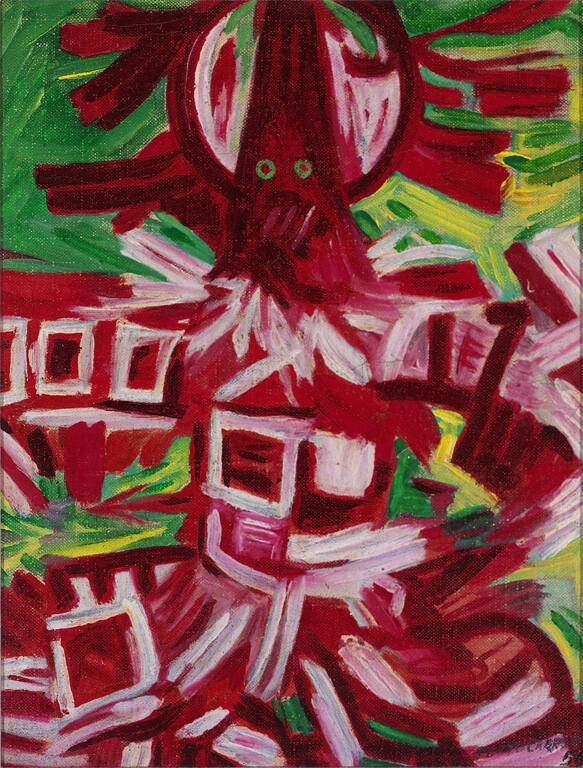
Object Details
Artist
René Portocarrero
Date
1956
Medium
Oil on canvas
Dimensions
Image: 15 1/2 × 11 3/4 inches (39.4 × 29.8 cm)
Frame: 19 5/8 × 15 7/8 × 1 5/8 inches (49.8 × 40.3 × 4.1 cm)
Credit Line
Gift of Dr. Charles Mango
Object
Number
2000.177.006
The Abakuá society is a Cuban all-male secret brotherhood and mutual aid society with lodges in Hav(…)
The Abakuá society is a Cuban all-male secret brotherhood and mutual aid society with lodges in Havana and in the province of Matanzas, which descended from the Ekpé society of the Calabar region of Nigeria with the arrival of slaves to Cuba. Initiates, known as ñáñigos, are known for their distinctive conical hats and tasseled costumes. Portocarrero paints an ireme, or diablito (little devil), whose role within the society is to enforce the tenets of the brotherhood. His broad and frenetic brushstrokes convey the energy and dynamism of the ireme’s dance while the shallow depth of field and dense yellow and green background amplifies the immediacy of the representation. Ekpé is also known as the society of the leopard; the square-patterned cloth of Portocarrero’s diablito may have been inspired by the leopard’s patterned fur, from which Ekpé costumes were originally made.In the decades following the Cuban revolution of 1959 (three years after Portocarrero made this painting) and particularly during the Special Period (an era of economic instability in Cuba following the fall of the Soviet Union), Afro-Cuban religion and traditions were often appropriated by the government as an exportable expression of Cuban culture. As such, the ireme is often used in promotional material and representations appear in tourist souvenirs. (“This is no Less Curious: Journeys through the Collection” cocurated by Sonja Gandert, Alexandra Palmer, and Alana Ryder and presented at the Johnson Museum January 24 – April 12, 2015)












